If you have heard about Hanoi’s famous cultural attractions like Hoan Kiem Lake and the Temple of Literature, then in Hue, Tu Hieu Pagoda is one of the temples you should visit
Tu Hieu Pagoda, located in the ancient capital of Hue, Vietnam, is not only a serene and picturesque site but also a place of deep historical and cultural significance. It is the final resting place of the revered Zen master Thich Nhat Hanh, adding to its spiritual gravitas.
The legend of Tu Hieu Pagoda
Tu Hieu Pagoda’s story began in 1843 when Venerable Nhat Dinh, a respected monk, retired from his role as Head Monk of Giac Hoang Quoc Tu. Seeking solitude and a place to care for his aging mother, he founded ‘Thao Am An Duong.’ His dedication to his mother is legendary, and it was this filial piety that earned the pagoda its name from King Tu Duc (Tự Đức).
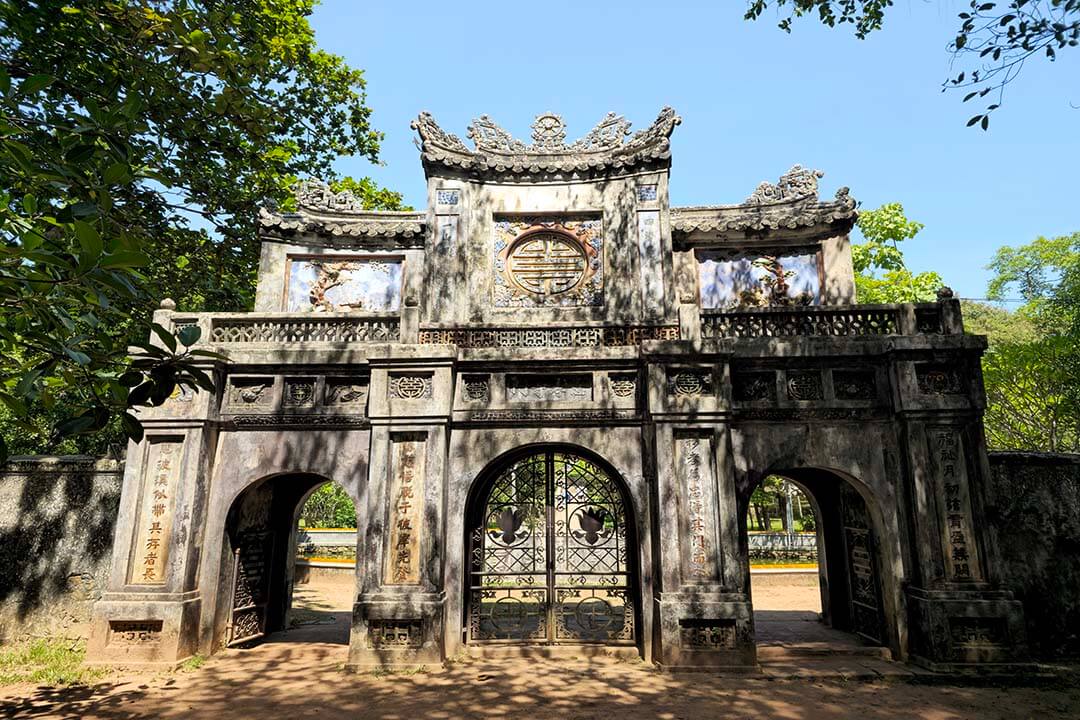
This act of devotion resonated deeply in a society that highly valued family bonds. Despite societal expectations for monks to adhere strictly to vegetarian diets, Nhat Dinh’s journey through forests to buy fish for his sick mother was a bold testament to his commitment. This story reached the ears of King Tu Duc, who, touched by the monk’s devotion, granted the pagoda the royal title “Sac Tu Tu Hieu,” symbolizing respect and gratitude.
Where is Tu Hieu Pagoda?
Tu Hieu Pagoda is nestled in Duong Xuan Thuong III Village, Thuy Xuan Ward, Hue City, Vietnam. Surrounded by a lush pine forest, it offers a tranquil escape from the bustling city, just 5 kilometers away.
How to get Tu Hieu Pagoda
Reaching Tu Hieu Pagoda is convenient, whether by car, motorbike, or taxi. Visitors can follow the main roads from Hue city center, passing through scenic routes that enhance the spiritual journey. The pagoda is well-signposted, ensuring easy navigation even for first-time visitors.
Things to do in Tu Hieu Pagoda
Tu Hieu Pagoda is a place rich in cultural and spiritual experiences, offering visitors a unique glimpse into Vietnam’s historical and religious heritage. From exploring ancient tombs to admiring traditional architecture, there is much to discover within the tranquil grounds of this revered site. Below are some of the key activities and sights to explore when visiting Tu Hieu Pagoda.
Visit the special cemetery of Nguyen Dynasty eunuchs
The cemetery for the eunuchs of the Nguyen Dynasty at Tu Hieu Pagoda is a unique feature that sets this pagoda apart from others in Vietnam. Eunuchs, who served in the royal court, often held significant but solitary roles within the royal household. Their loyalty and service were highly valued, but their unique status meant they were separated from traditional familial ties. The cemetery at Tu Hieu Pagoda was established to honor these individuals, providing them a place of dignity and peace in their afterlife.
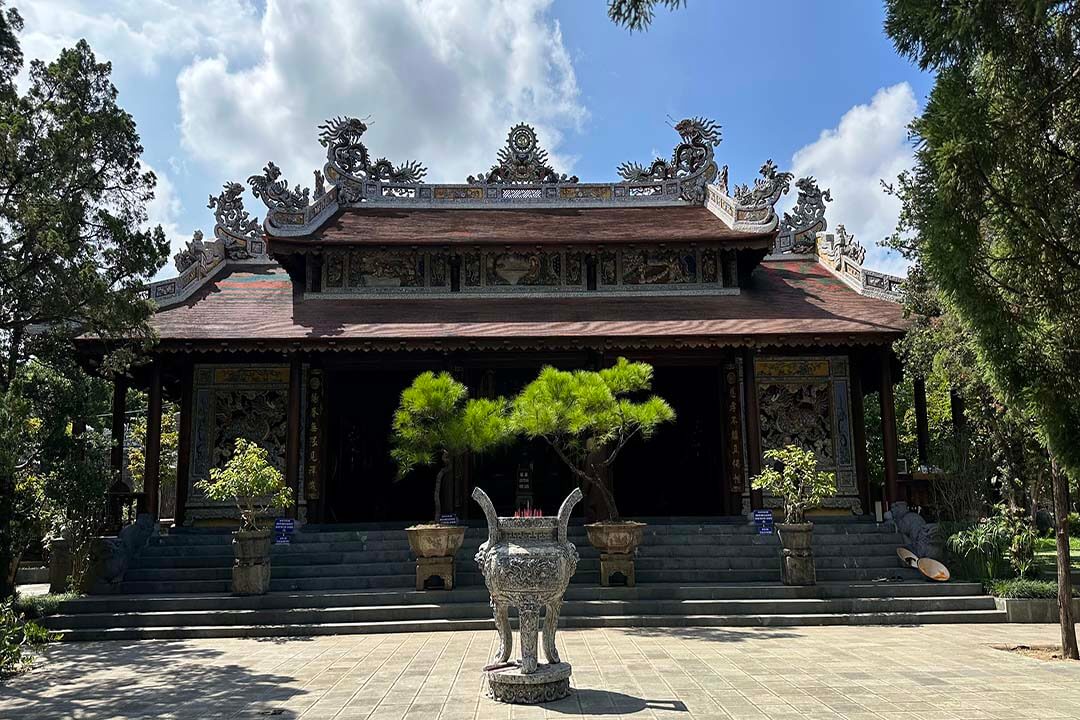
Walking through this cemetery, visitors can observe the tombstones adorned with detailed carvings and inscriptions that tell the stories of these historical figures. The serene environment of the pagoda adds to the reflective experience, inviting visitors to contemplate the lives of those who served in silence and devotion. The cemetery is not just a place of rest but a poignant reminder of the personal sacrifices made by those who served the Nguyen Dynasty, offering a deeper understanding of Vietnam’s royal history.
Admire the architecture of Tu Hieu Pagoda
Tu Hieu Pagoda is an architectural gem that exemplifies traditional Vietnamese design. The pagoda, built in the mid-19th century, features a harmonious blend of natural elements and human craftsmanship. Its layout is carefully planned according to feng shui principles, with the main hall facing a serene pond, symbolizing balance and harmony. The structure of the pagoda includes tiered roofs with upturned eaves, intricately carved wooden beams, and detailed altars that are adorned with symbolic motifs from Buddhist iconography.
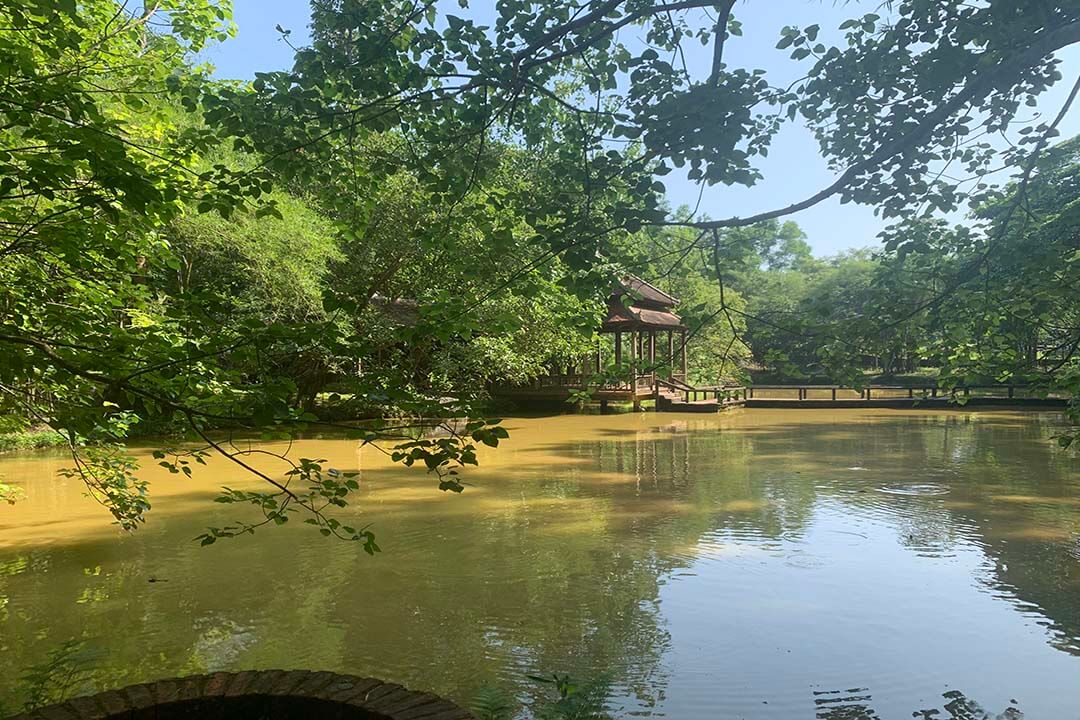
The pagoda’s architecture is not just about aesthetics; it reflects the spiritual beliefs and cultural values of the time. The main sanctuary, where the Buddha is enshrined, is a place of calm and reverence, inviting visitors to meditate and reflect. Surrounding the sanctuary are smaller shrines dedicated to various Bodhisattvas and revered monks, each one a testament to the pagoda’s rich spiritual heritage. The serene gardens and the pine forest that envelop the pagoda add to its tranquil ambiance, making it an ideal spot for contemplation and spiritual retreat.
Visiting monk Thich Nhat Hanh
Tu Hieu Pagoda is also renowned as the spiritual home of Zen master Thich Nhat Hanh, a globally respected figure in Buddhism. Thich Nhat Hanh returned to Vietnam after decades of exile and chose Tu Hieu Pagoda as his residence, where he lived until his passing in 2022. His presence at the pagoda attracted visitors from all over the world, drawn by his teachings on mindfulness, peace, and compassion. The atmosphere of the pagoda is imbued with the essence of his teachings, making it a place of pilgrimage for those who follow his path.
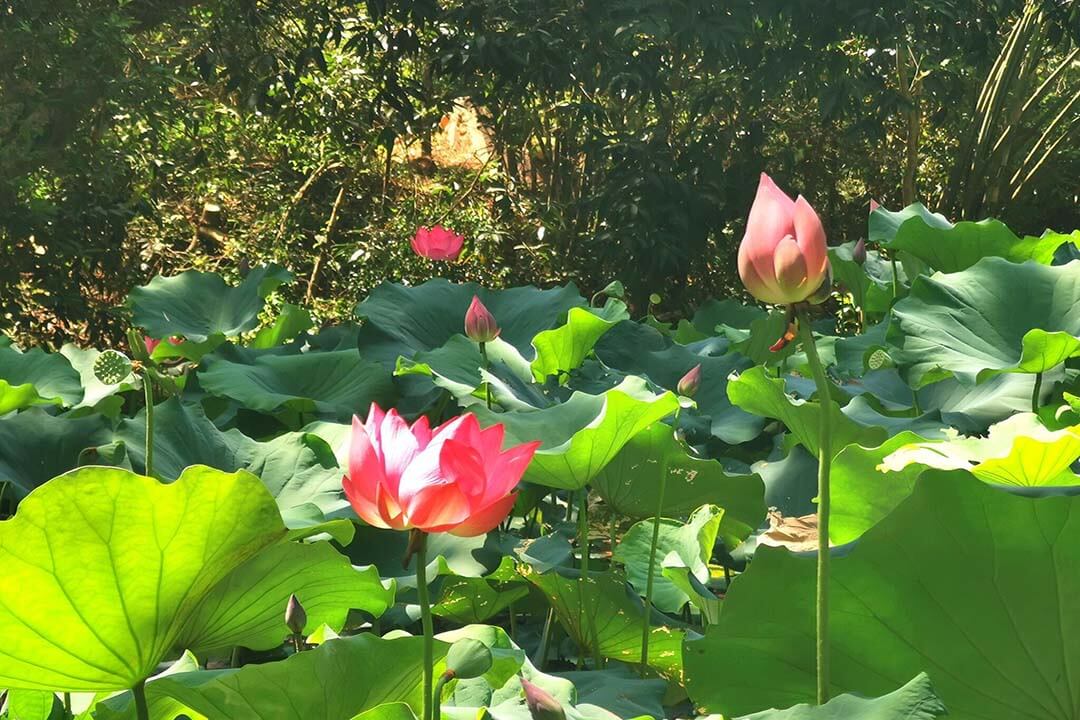
Visitors to Tu Hieu Pagoda can experience the serene environment that Thich Nhat Hanh cherished. The pagoda’s peaceful setting, combined with its historical significance, provides a perfect backdrop for practicing mindfulness and meditation. The rooms where Thich Nhat Hanh lived and worked are preserved as a testament to his life and legacy, allowing visitors to connect with his teachings on a deeper level. The pagoda continues to be a center for mindfulness retreats and spiritual practice, carrying forward the legacy of Thich Nhat Hanh for future generations
Other attractions near Tu Hieu Pagoda
Hue, the ancient capital of Vietnam, is rich in historical and cultural sites. While Tu Hieu Pagoda is a significant destination in its own right, there are several other notable attractions nearby that offer a deeper insight into the region’s royal heritage and spiritual traditions. Exploring these sites can provide a comprehensive understanding of Hue’s unique historical landscape.
Khai Dinh Tomb
Located just a short distance from Tu Hieu Pagoda, the Khai Dinh Tomb stands as a testament to the blending of Eastern and Western architectural styles. Unlike the other royal tombs in Hue, which adhere strictly to traditional Vietnamese designs, Khai Dinh Tomb incorporates modern elements from French architecture, reflecting the changing times during the colonial period. The tomb was built for Emperor Khải Định, the penultimate emperor of Vietnam, who reigned from 1916 to 1925. Known for his fascination with Western culture, King Khai Đinh was instrumental in modernizing certain aspects of Vietnamese society, though his reign was also marked by controversy due to his cooperation with the French colonial government
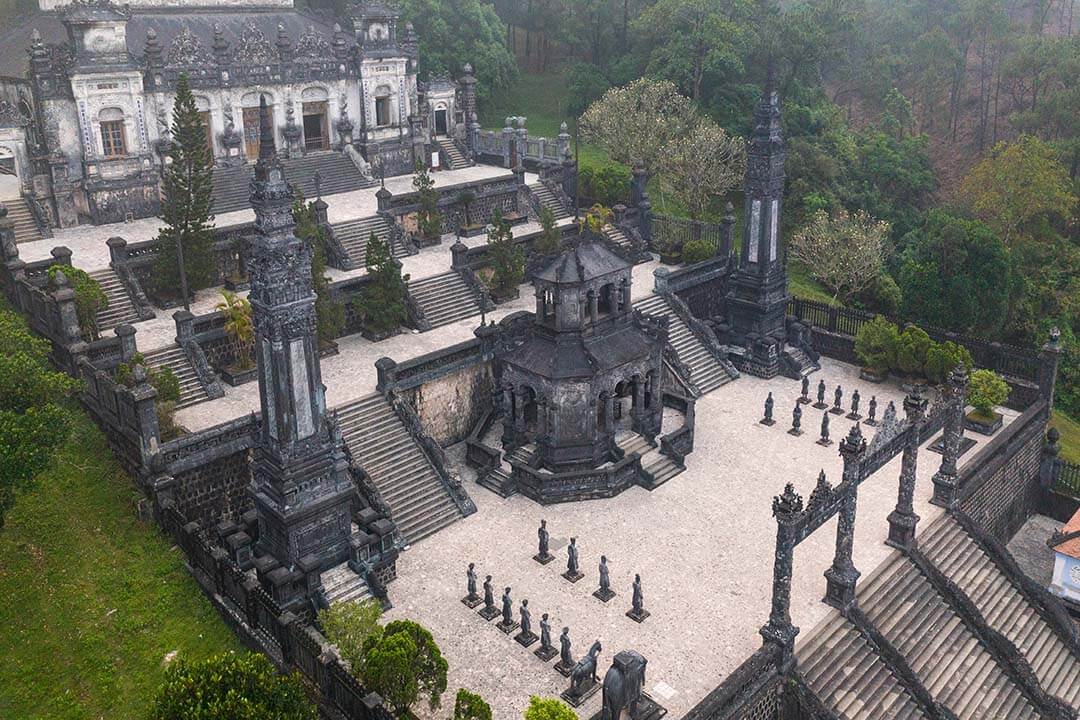
Visitors to Khai Dinh Tomb are often struck by the contrast between its opulent design and the simplicity of nearby sites like Tu Hieu Pagoda. The tomb’s construction took 11 years and was completed in 1931, making it one of the last royal tombs to be built in Hue. The interior is equally impressive, with a grand staircase leading to the emperor’s final resting place, adorned with murals and reliefs depicting dragons and other mythical creatures. This unique blend of cultural influences makes Khai Dinh Tomb a must-visit for those interested in the evolution of Vietnamese royal architecture.
Minh Mang Tomb
Another nearby attraction, Minh Mang Tomb, is renowned for its classical Vietnamese architecture, which reflects the emperor’s strong and disciplined personality. Located about 12 kilometers from the city center, this tomb is set amidst a lush landscape of gardens, lakes, and courtyards, creating a peaceful retreat that contrasts with the bustling city of Hue. The tomb’s layout is meticulously planned, with the main structures aligned along a central axis, symbolizing the emperor’s authority and order.
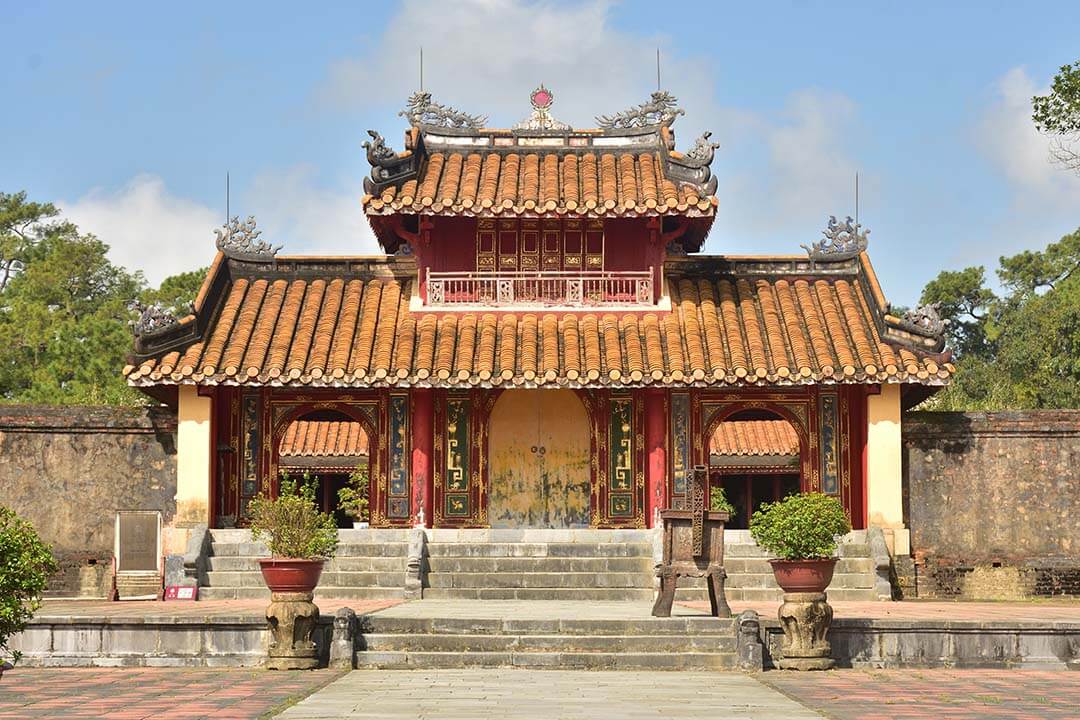
Minh Mang Tomb is also notable for its harmonious integration with the surrounding nature, which enhances the spiritual atmosphere of the site. The complex includes several pavilions and temples dedicated to the emperor’s memory, each decorated with traditional motifs that emphasize his legacy. As visitors stroll through the serene gardens and cross the stone bridges over tranquil lakes, they can reflect on the life and achievements of one of Vietnam’s most respected emperors. This tomb is not just a burial site but a celebration of Minh Mạng’s contributions to the Nguyen Dynasty and Vietnamese culture.
Standing Buddha Temple
For those interested in exploring more spiritual sites, the Standing Buddha Temple offers a majestic statue that overlooks the surrounding landscape. This temple, while lesser-known compared to others in the region, provides a tranquil space for meditation and reflection. The Standing Buddha, towering over the temple grounds, is a symbol of enlightenment and peace, inviting visitors to pause and connect with their inner selves.
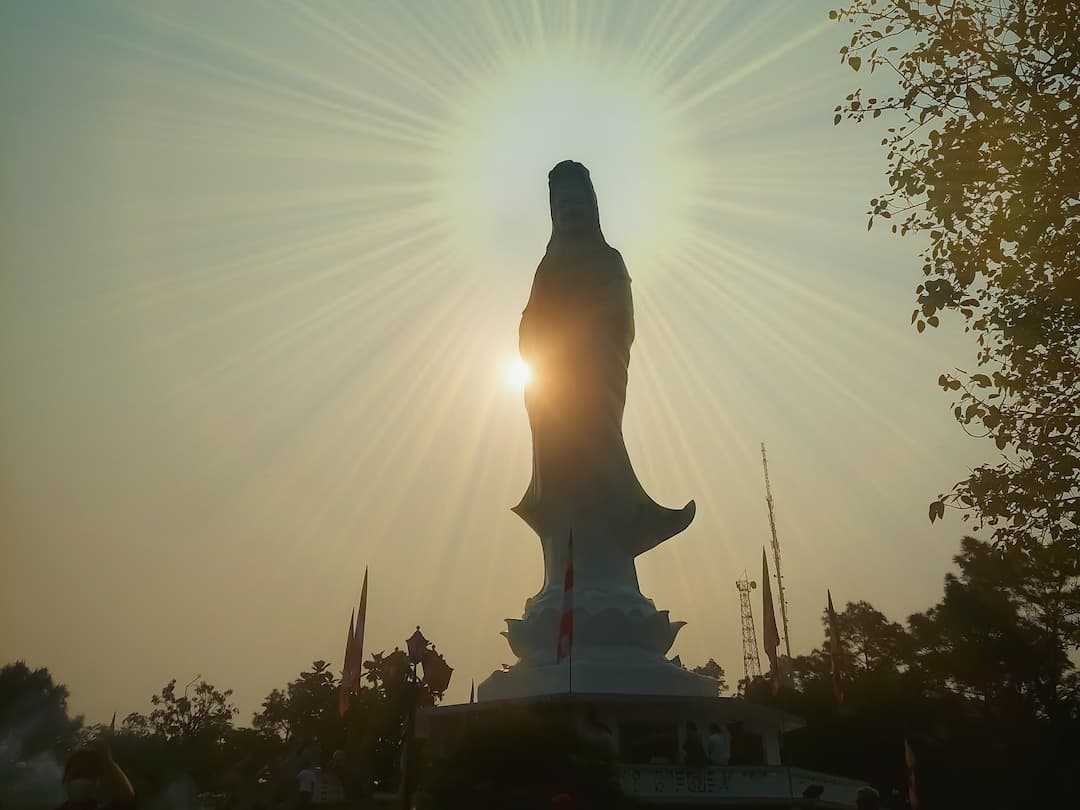
The temple’s serene setting, away from the main tourist routes, allows for a more intimate experience with Vietnamese Buddhist practices. The peaceful environment, coupled with the gentle rustling of leaves and the soft chime of temple bells, creates an ideal setting for mindfulness. Visitors can also explore the smaller shrines and meditation halls within the temple complex, each offering a different aspect of Buddhist teachings. The Standing Buddha Temple is a perfect complement to the more historically focused sites nearby, providing a spiritual dimension to the exploration of Hue.
Gia Long Tomb
The tomb of Emperor Gia Long, the founder of the Nguyen Dynasty, is another significant site near Tu Hieu Pagoda. Located in a remote area of the mountains, Gia Long Tomb offers a mystical and secluded atmosphere that reflects the emperor’s austere and strategic nature. The tomb complex is spread across a large area, with various temples and monuments dedicated to the emperor’s memory, set against the backdrop of rugged hills and dense forests.
Visiting Gia Long Tomb requires a bit more effort due to its remote location, but the journey is well worth it for those interested in Vietnamese history. The tomb’s architecture is less elaborate than some of the later royal tombs, emphasizing simplicity and strength, much like the emperor himself. The site offers a peaceful retreat from the city, where visitors can ponder the legacy of the emperor who unified Vietnam and established the Nguyen Dynasty. The natural beauty surrounding the tomb enhances the sense of isolation and reverence, making it a poignant experience for history enthusiasts.
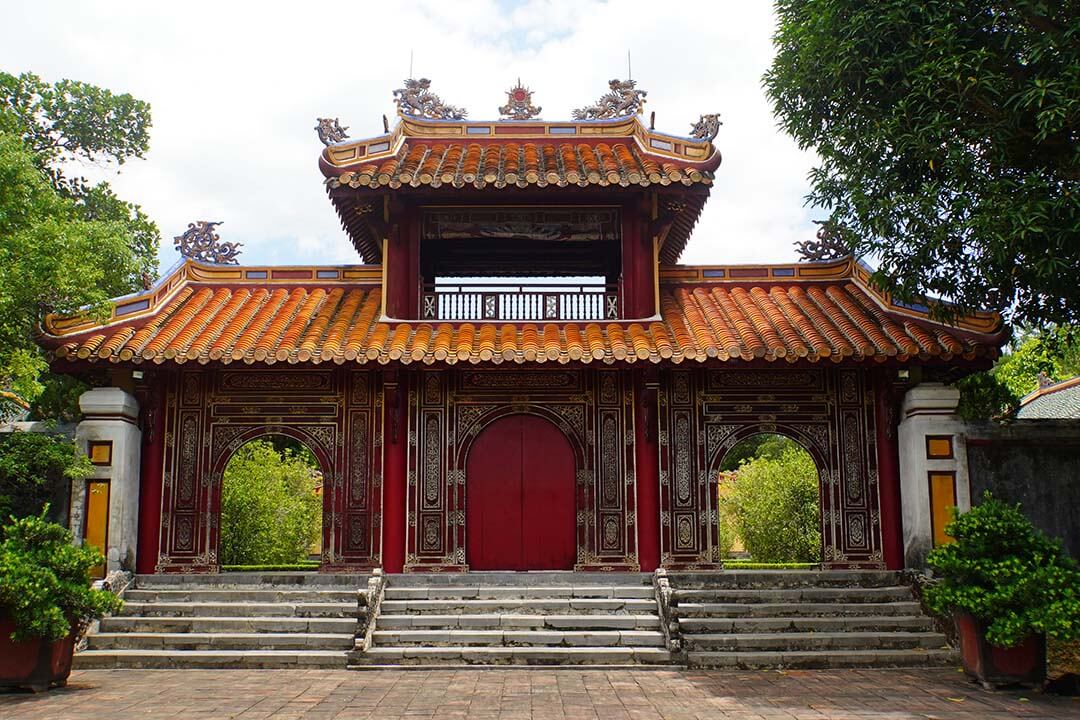
In conclusion, visiting Tu Hieu Pagoda is more than just a sightseeing trip; it’s a journey into the heart of Vietnamese history and spirituality. Whether you’re drawn by its legends, its architectural beauty, or the serene environment, Tu Hieu Pagoda is a destination that embodies the essence of Hue’s cultural heritage. When planning your visit, it’s important to consider the Vietnam climate, as Hue experiences a tropical monsoon climate with distinct wet and dry seasons.
The best time to visit is during the dry season, from March to August, when the weather is warm and ideal for exploring the temple and surrounding attractions. However, the rainy season, from September to December, also has its charm, with the pagoda surrounded by lush greenery. For an enriching experience, include this site in your itinerary, and don’t forget to explore the nearby attractions for a complete cultural immersion. For more insights and tips, visit the “Vietnam Travel Tips” blog.


